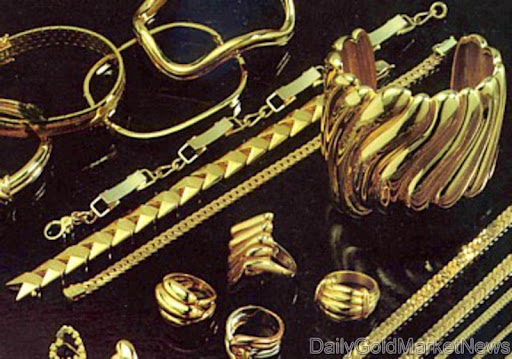 LONDON - Gold rose for a fourth day on Monday, driven by concern over the impact to global growth from the devastation in Japan, while western air attacks on Libya added to investor uncertainty.
LONDON - Gold rose for a fourth day on Monday, driven by concern over the impact to global growth from the devastation in Japan, while western air attacks on Libya added to investor uncertainty.
Hopes of progress in averting a nuclear disaster at a Japanese power station damaged by the earthquake and subsequent tsunami 10 days ago helped soothe the equity markets, but there remained enough doubt over the longer-term hit to the world’s third largest economy to encourage buying of gold.
The gold price
Last week, gold fell by as much as 2.6 percent as the unfolding situation in Japan triggered a wave of selling in higher-risk assets, prompting investors to liquidate their bullion holdings to cover losses in other markets and analysts said the high level of risk aversion might see a repeat of this. “It’s happening against a backdrop of elevated uncertainty from numerous places, which should give these safe-haven type commodities a bid,” said Saxo Bank senior manager Ole Hansen.
“As long as we have this tendency towards risk aversion in the market, gold will be struggling. It’s such a high percentage of the total investment in commodities, so if there is anything to be reduced, gold is often in the firing line in that respect.”
Gold usually benefits from periods of heightened risk aversion, but since the Japanese earthquake, which struck on March 11 and is feared to have killed over 20,000, the price has fallen by more than 3 percent.
CRUDE UP
On Monday, Brent crude oil climbed 1.5 percent as a result of the rising tension in Libya, also helping to buoy the price of gold, which is used as a hedge against inflation.
With unrest spreading in Yemen and Syria, western warplanes and missiles hit Libya over the weekend in a bid to force leader Muammar Gaddafi to end attacks on civilians.
“Obviously the tensions in the Middle East, coupled with the significantly weak dollar against the euro, help give gold the current boost,” said Darren Heathcote, head of trading at Investec Australia.
“If the dollar remains weak and we get further unrest in the Middle East, there is a very reasonable chance for gold to test the record high,” said Heathcote.
The dollar index declined to its lowest since the end of 2009, after the euro hit four-month highs against the dollar as the euro zone looked set to officially agree on details of bolstering a bailout fund at the March 24-25 summit.
Reflecting the pick-up late last week in investor appetite for gold, holdings of the metal in the world’s largest bullion-backed exchange traded funds, the SPDR Gold Trust, rose to their highest in 5-1/2 weeks.
Holdings of gold in the six major ETFs tracked by Reuters are set for a rise by over half a million ounces this month, although in the quarter so far, holdings have fallen by 2.13 million ounces.
Spot silver climbed 2.9 percent to $36.04 an ounce, making it the top gainer in the precious metals complex. Silver prices are on track for a ninth successive quarterly gain, up by 16.1 percent in the first three months of the year.
Spot palladium was last up 2.0 percent at $742.72 an ounce, but is set for a near-8 percent decline this quarter, having come under pressure from investors concerned about the impact of the Japanese earthquake and soaring energy prices on the broader economy.
Data from the Commodity Futures Trading Commission last week showed the largest weekly decline in speculative holdings of palladium since at least 1995, bringing the net non-commercial futures position to 1.12 million ounces, its lowest since October 2009.
Spot platinum was last up 1.3 percent at $1,740.24.


























0 comments